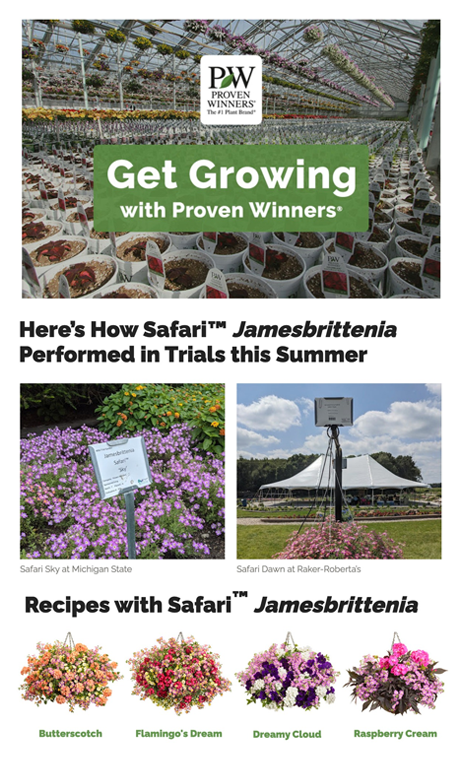Juicy Fruits™ Nemesia
Early Spring to Summer Finish. Standard PPP.
For pots 6" and smaller pinch at transplanting only. For hanging baskets and pots larger than 6" soft pinch at planting, additional pinches as needed. Sumagic at 5-10 ppm is effective at controlling growth if needed. Cold temperatures will also control growth.
General pest and disease practices as listed in notes. Juicy Fruit is sensitive to pythium, phytopthera, and thelaviopsis. Maintaining proper pH (5.5-5.8) and good sanitation practices will help alleviate problems. Increased air circulation, proper water management and good soil porosity are also critical. Rhapsody or copper based fungicide has been found to be effective in preventing erwinia. Agrimycin is also effective as a preventative for controlling erwinia.
Water early in the morning and maintain low humidity. Thrip control is necessary because Juicy Fruits are susceptible to INSV.
-Grow dry.
-Preventive fungicides are recommended at transplant.
-High light required at production.
-Air circulation, proper water management, and good soil porosity are critical.
-Water early in the morning and maintain low humidity.
Air circulation and proper water management are critical.
Key points
- It is recommended to plant your liners as soon as possible after arrival. Damaging the root system from extremes in soil moisture levels can lead to transplant loss in the first 1-3 weeks of growing.
- Upright Sunsatia varieties (like Mango and Raspberry) are less susceptible to root problems.
- Sunsatia cultivars have to be considered Nemesia hybrids, although different crossing partners were used to develop the range. Characteristics of Sunsatia which pertain to all varieties include early flowering, floriferousness, vigor and excellent branching habit. However, it should be kept in mind that all Sunsatia cultivars were created by crossing annual and perennial Nemesia species. While this brings many advantages, it may also at times make this crop more susceptible to varying growing conditions.
- Sunsatia could also be ideally suited as a winter bedding plant crop for areas with hot summers and moderate winters, i.e., the southern and western U.S. Given their day-length neutral flowering response and tolerance of light frosts, plus the fact that flower size and overall vigor is better under cooler conditions, this could well become an important winter crop in these areas.
Moisture & fertility
pH: 5.5-6.0
E.C (2:1 Extraction Method): .6-.9
- A well drained soil mix is required to produce consistently high quality plants with minimal or no losses. Sunsatia Nemesia does not perform well if grown in a constantly saturated soil mix. Root systems will not expand, root and stem rots can occur, and eventually plant collapse and rot will develop if kept too wet.
- Sunsatia varieties have a very fine, sensitive root system; they do not tolerate waterlogged soil, neither during the cultivation period or at the consumer level. It is very important that a well drained soil mix is used. We also advise growers to use a preventative fungicide drench after potting, and to keep the crop on the dry side. Trials have shows that Sunsatia can tolerate dry soil conditions very well.
- Soil pH should be maintained in the range of 5.5



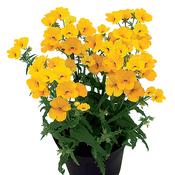

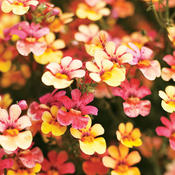
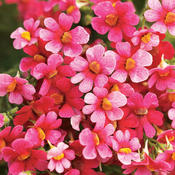

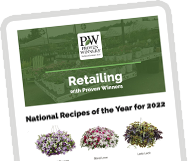 Sign up for our grower and retailer emails!
Sign up for our grower and retailer emails!